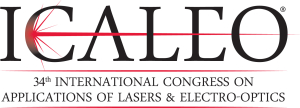
34th ICALEO in Atlanta, on Oct. 19, 2015
source:LIA
release:Johnny Lee
keywords: ICALEO Lasers Electro-Optics LIA
Time:2015-10-10

Dr. Ellen Townes-Anderson, one of the four daughters of laser pioneer Charles Townes, will be a featured speaker at the Laser Institute of America’s 34th International Congress on Applications of Lasers & Electro-Optics (ICALEO®) in Atlanta, Georgia on Oct. 19, 2015.
Townes-Anderson is a professor in the Department of Neurology and Neurosciences at Rutgers New Jersey Medical School in Newark, N.J. — about 20 miles away from the Bell Labs facility wher her father and Arthur Schawlow filed for their maser patent in 1958. Her current work involves using laser “tweezers” to grab neurons for study by placing them on electrodes.
In an exclusive video interview with LIA, Townes-Anderson recalled how her work led her to a rare collaboration with her Nobel Prize-winning father.
“My father always asked me about my work and always said, ‘Please send me your published papers,’ which I did,” she explains. “And he’d always say, ‘Oh they were very interesting but I couldn’t understand them. In the mid-’90s, he said, ‘Have you thought about using something called the optical trap or the optical tweezers?’
Her father helped set up a meeting with Arthur Ashkin, inventor of the optical tweezers, while Townes-Anderson was working at Cornell’s Department of Physiology.
“My colleague and I went out to visit Arthur Ashkin and see his optical tweezer setup at Bell Labs,” she recalls. “He showed us images of tweezers interacting with biological material and nerve cells.”
Townes-Anderson developed the idea that she might be able to move nerve cells and procured funding from the National Institute of Health to buy an optical tweezer setup.
“We proceeded to try to move nerve cells, and I would occasionally see my father and show him the videos of what we were trying to do. And cells were spinning out of the trap, and it kind of wasn’t working. Eventually we were able to develop a substrate on a glass plate to which the cells would not stick.” The substrate is the same material used for contact lenses.
With the new process in place, she says, “we were able to pick up whole nerve cells — and these were huge neurons (that) came from salamanders. … Then we developed experiments” based on the premise of building clusters of nerve cells of the researchers’ choosing, then watching the cells’ interactions.
Eventually “we published a paper in which I cited two of my fathers’ papers, and I’ve never since been able (to do that).”
Work in this area continues in her Rutgers lab. A graduate student of hers is using optical tweezers to move nerve cells on a microelectrode array and place cells at precise points on the electrodes.
Townes-Anderson’s scheduled presentation is part of a new focus on biomedical laser applications at this year’s ICALEO, which runs from Oct. 18-22. To register, view the advance program and get information on other exciting presentations, visit the ICALEO website at www.icaleo.org.
about LIA
The Laser Institute of America (LIA) is the professional society for laser applications and safety serving the industrial, educational, medical, research and government communities throughout the world since 1968. www.lia.org, 13501 Ingenuity Drive, Ste 128, Orlando, FL 32826, +1.407.380.1553.
MOST READ
- RoboSense is to Produce the First Chinese Multi-beam LiDAR
- China is to Accelerate the Development of Laser Hardening Application
- Han’s Laser Buys Canadian Fiber Specialist CorActive
- SPI Lasers continues it expansion in China, appointing a dedicated Sales Director
- Laser Coating Removal Robot for Aircraft
PRODUCTS
 FISBA exhibits Customized Solutions for Minimally Invasive Medical Endoscopic Devices at COMPAMED in
FISBA exhibits Customized Solutions for Minimally Invasive Medical Endoscopic Devices at COMPAMED in New Active Alignment System for the Coupling of Photonic Structures to Fiber Arrays
New Active Alignment System for the Coupling of Photonic Structures to Fiber Arrays A new industrial compression module by Amplitude
A new industrial compression module by Amplitude Menhir Photonics Introduces the MENHIR-1550 The Industry's First Turnkey Femtosecond Laser of
Menhir Photonics Introduces the MENHIR-1550 The Industry's First Turnkey Femtosecond Laser of Shenzhen DNE Laser introduced new generation D-FAST cutting machine (12000 W)
more>>
Shenzhen DNE Laser introduced new generation D-FAST cutting machine (12000 W)
more>>
